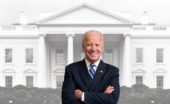Molly Minturn - My family is heartbroken to share that my father died in surgery on Monday, Feb. 10. It…
U.S. in 2012 – State of the Union
Written by Diana Thebaud Nicholson // January 24, 2012 // Public Policy, U.S. // Comments Off on U.S. in 2012 – State of the Union
State of the Union 2012: Obama speech full text

(ABC News) State of the Union: Obama Makes Case for Economic ‘Fairness,’ Second Term (video)
President Barack Obama tonight presented an argument for his presidency and a second term with a State of the Union address that outlined a sweeping vision for American exceptionalism sustained by an economy rooted in “fairness.”
James Fallows: Annotated State of the Union Speech Frequently perceptive and amusing analysis of the rhetoric of the Address. It may also call to your attention subtleties, or crowd reaction that you either missed or have already forgotten.
(The Atlantic) Overall this was an impressive and surprising speech, which accomplished the main goal of a “Year Four” State of the Union Address in a different way from what I had foreseen. Those goals include putting the political opposition in an awkward position in the run-up to the presidential election, and the speech did more of that than I expected.
At the beginning of Year Four for a first-term incumbent, which was the setting for Obama’s speech this week, the purpose of the SOTU address is less to advance a program than to build a case. Although Year Four presidents, including Obama, often go through the motions of urging action on various bills, they know that very little is likely to occur—especially when, like Obama, they face a divided or opposition-controlled Congress. (It doesn’t say much good about our legislative system that for fully one year out of four it’s essentially out of commission, as all members of the House concentrate on re-election, along with a third of the Senators. But that’s life.) These legislative “goals,” like nearly everything Obama mentioned in this speech, really should be thought of as “for example” illustrations of the larger case the president is making for another chance at governing. In reality, everything a new president does from the day after his original election is done with an eye toward the re-election run. But starting in Year Four, that “four more years!” case is out in the open and legitimate. I don’t think that the leitmotif slogan of this speech—”Built to Last”—is really going to make it as the slogan of the Obama 2012 campaign. (And for obvious reasons, they’re not going to resurrect “Change We Can Believe In.”) But the ideas and arguments in the speech do, I think, set up the main themes Obama and his team will stress.
In a nutshell, that theme—the intended message of the speech—is: I am a reasonable guy, still hoping to be a uniter rather than a divider, and I have a plan to deal with the trends that make us all worry about our economy and society. Also, I’m very patriotic—and if you think I’m weak or pussy-footing, go ask Osama bin Laden about that.
State of the Union: Obama appeals — again — for unity
(WaPost) The last time President Obama was in the House chamber, he was fighting for his American Jobs Act. It was the official start of Obama 2.0, a more focused and sharp-tongued chief executive who was ready to use the power at his disposal to do what Congress wouldn’t. Tonight’s State of the Union address showed a president comfortable with power and unafraid to use it to do what he thinks is right.
… there is no question that the most powerful moment in a powerful speech came at the end, when the man who burst onto the national scene by tapping into our longing for getting beyond the divisions between a Red America and a Blue America revived that within-arms-reach ideal.
Each time I look at that flag, I’m reminded that our destiny is stitched together like those fifty stars and those thirteen stripes. No one built this country on their own. This Nation is great because we built it together. This Nation is great because we worked as a team. This Nation is great because we get each other’s backs. And if we hold fast to that truth, in this moment of trial, there is no challenge too great; no mission too hard.

It is always fascinating to see the emphasis placed by the different media voices:
Obama urges taxing the rich, reining in Wall Street
(Reuters) – President Barack Obama used his last State of the Union speech before the November election to paint himself as the champion of the middle class, by demanding higher taxes for millionaires and tight reins on Wall Street.
Obama the reluctant populist
(Politico) Barack Obama has always been a reluctant class warrior, but his State of the Union address showed he’s staking his reelection on an economic populist message more raw than anything he campaigned on four years ago.
Huey Long he ain’t: When he’s made the case for income equality — and he’s done so often over the years — he’s addressed the issue in rational, reasonable, nonconfrontational terms, with a post-partisan emphasis on “we” rather than “us vs. them.” and Obama State of the Union speech: ‘No bailouts, no handouts and no cop-outs’
Obama puts ‘fairer’ tax at heart of election
(Financial Times) Candidate releases two years of records hours after attacking rival Newt Gingrich in his most aggressive debate performance
State of the Union driven by economy, election
(Christian Science Monitor) The President’s speech called for tax reform and government accountability.
A BRIEF HISTORY OF STATE OF UNION MESSAGES
This summary was compiled by Byron Toben
The U.S. Constitution only requires the President to give “an annual message” to Congress.
George Washington, the first President, delivered the first message on Jan 8, 1790.
He and John Adams, the second President, gave these messages verbally to the Congress assembled.
The third, Thomas Jefferson, started giving the messages in Writing, albeit individually, to each member. These were then reprinted in Newspapers until 1913,when number 28,Woodrow Wilson , reinstituted speaking to the whole Congress assembled.
In 1923, number 30, Calvin Coolidge introduced the practice to Radio.
In 1935, number 32, Franklin Roosevelt, who perfected his use of radio, dubbed these messages “the State of the Union”, the name since then.
In 1947, number 33, Harry Truman brought it to TV.
In 2002 . number 43, George W. Bush, was covered by Internet as well.
In 2011, number 44, Barack Obama spoke to the Congress with the seating mixed between Democrats and Republican instead of left and right sides.
Some key announcements were:
1823 James Monroe announced the Monroe Doctrine
1862 Abraham Lincoln ,the end of slavery
1942 Franklin Roosevelt, the Four Freedoms
2002 George W. Bush, the war on terrorism



